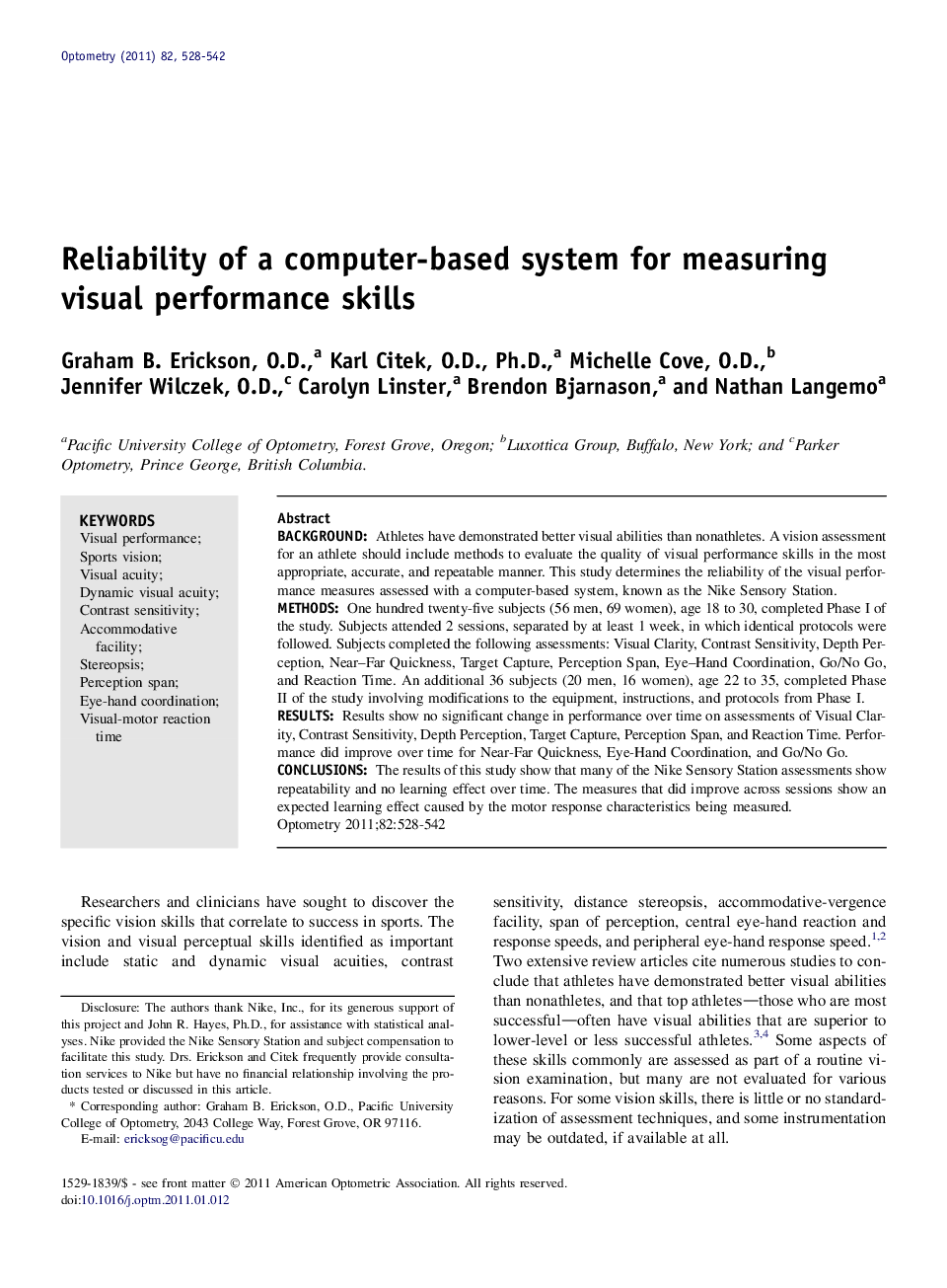| Article ID | Journal | Published Year | Pages | File Type |
|---|---|---|---|---|
| 2699332 | Optometry - Journal of the American Optometric Association | 2011 | 15 Pages |
BackgroundAthletes have demonstrated better visual abilities than nonathletes. A vision assessment for an athlete should include methods to evaluate the quality of visual performance skills in the most appropriate, accurate, and repeatable manner. This study determines the reliability of the visual performance measures assessed with a computer-based system, known as the Nike Sensory Station.MethodsOne hundred twenty-five subjects (56 men, 69 women), age 18 to 30, completed Phase I of the study. Subjects attended 2 sessions, separated by at least 1 week, in which identical protocols were followed. Subjects completed the following assessments: Visual Clarity, Contrast Sensitivity, Depth Perception, Near–Far Quickness, Target Capture, Perception Span, Eye–Hand Coordination, Go/No Go, and Reaction Time. An additional 36 subjects (20 men, 16 women), age 22 to 35, completed Phase II of the study involving modifications to the equipment, instructions, and protocols from Phase I.ResultsResults show no significant change in performance over time on assessments of Visual Clarity, Contrast Sensitivity, Depth Perception, Target Capture, Perception Span, and Reaction Time. Performance did improve over time for Near-Far Quickness, Eye-Hand Coordination, and Go/No Go.ConclusionsThe results of this study show that many of the Nike Sensory Station assessments show repeatability and no learning effect over time. The measures that did improve across sessions show an expected learning effect caused by the motor response characteristics being measured.
